Photographs: Jayanta Shaw/Reuters.
Unable to bear the burden of the crop damage, the debt-ridden cotton farmers who were anxiously waiting to reap the benefits of a robust harvest took the extreme step of ending their lives. Nine farmers in the Vidarbha region have committed suicide in just the last 5 days.
For farmers in India, every day is a fight for survival. Despite toiling hard for long hours, they hardly get the right price for the produce nor do they get timely assistance from the government.
The rising prices hardly offer succour to the farmer as the middlemen and traders mint money buying the produce from farmers at cheap rates. Even as the prices or vegetables and cereals rise to record levels, farmers become poorer.
Living on the mercy of money lenders, many are forced to end their lives. The statistics are alarming -- 17,368 farmers committed suicide in 2009 alone.
Maharashtra saw the largest number of 2,872 suicides.
Click NEXT to see how farmers work hard to feed millions even as they go hungry...
A day in the life of desperate Indian farmers
Image: A farmer carries bundles of straw amid dense fog on the outskirts of Agartala, capital of Tripura.Photographs: Jayanta Dey.
During 1990-91, Agriculture was a major contributor to the economic growth, accounting for 32 per cent of the GDP.
A day in the life of desperate Indian farmers
Image: A farmer pulls a wooden plank to level the soil in a paddy field on the outskirts of the Allahabad.Photographs: Jitendra Prakash/Reuters.
India ranks second in farm output worldwide. India's agriculture and allied sector grew by 3.8 per cent in the first six months of the current fiscal (2010-11).
According to World Bank, India's large subsidies are hampering productivity-enhancing investment. Besides this, the overregulation of agriculture has increased costs, price risks and uncertainty.
A day in the life of desperate Indian farmers
Image: A farmer and his family work at their cauliflower field amid dense fog.Photographs: Ajay Verma/Reuters.
A day in the life of desperate Indian farmers
Image: A farmer sleeps next to a sugarcane field in the village of Dumchhedi in Punjab.Photographs: Ajay Verma/Reuters.
A day in the life of desperate Indian farmers
Image: A farmer ploughs his paddy field in Kadamtala village, about 189 km (117 miles) north of Agartala.Photographs: Jayanta Dey/Reuters.
A day in the life of desperate Indian farmers
Image: A farmer works in a pulse farm at Bakrol village on the outskirts Ahmedabad.Photographs: Amit Dave/Reuters.
A day in the life of desperate Indian farmers
Image: Kashmiri farmers.Photographs: Reuters.
The private sector investment in agriculture has increased from $14 billion in 2004-05 to $25.5 billion in 2008-09.
A day in the life of desperate Indian farmers
Image: Kashmir Singh, 56, a farmer, inspects his sunflower crop in a field at Dharar village.Photographs: Reuters.
A day in the life of desperate Indian farmers
Image: Workers spread red chilli peppers to dry in Shertha village on the outskirts of Ahmedabad.Photographs: Amit Dave/Reuters.
A day in the life of desperate Indian farmers
Image: A farmer works in a Paan or betel leaf garden in Sonamura village near Tripura.Photographs: Jayanta Dey/Reuters.
While 66 per cent of the total betel leaf production is from West Bengal, 22 per cent comes from Uttar Pradesh.
A day in the life of desperate Indian farmers
Image: A farmer collects potatoes at a farm in Kadohiyar village.Photographs: Jitendra Prakash/Reuters.
A day in the life of desperate Indian farmers
Image: Farmers plant rice seedlings in their field on the outskirts of Siliguri.Photographs: Rupak De Chowdhuri/Reuters.
A day in the life of desperate Indian farmers
Image: Farmers transport watermelons on their camels to sell in a market near Allahabad.Photographs: Jitendra Prakash/Reuters.
A day in the life of desperate Indian farmers
Image: A farmer arranges radish at a vegetable market.Photographs: Amit Gupta/Reuters.
A day in the life of desperate Indian farmers
Image: An Indian farmer walks with his hungry cow through a parched paddy field in Agartala.Photographs: Reuters.
A day in the life of desperate Indian farmers
Image: An Indian farmer sleeps on watermelons in Siliguri.Photographs: Rupak De Chowduri/Reuters.
A day in the life of desperate Indian farmers
Image: A farmer inspects a snow covered cauliflower field with his child near Kufri.Photographs: Anil Dayal/Reuters.
A day in the life of desperate Indian farmers
Image: A farmer sits besides a heap of paddy as he protects himself with plastic tarpaulin during rains.Photographs: Ajay Verma/Reuters.
A day in the life of desperate Indian farmers
Image: Tribal women work in a peas field in Lossar village, Himachal Pradesh.Photographs: Anil Dayal/Reuters.

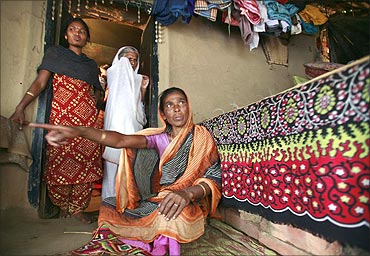
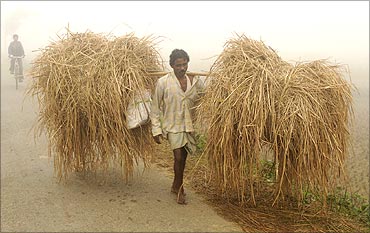

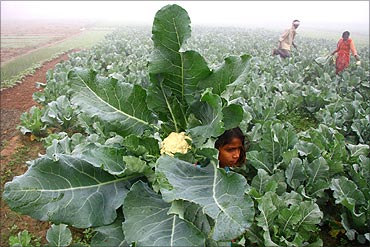

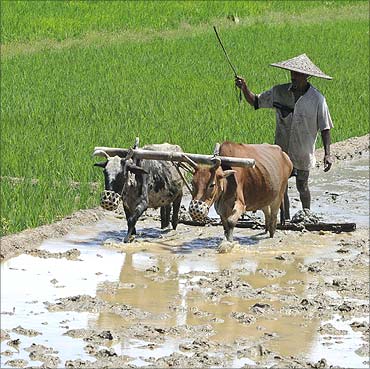
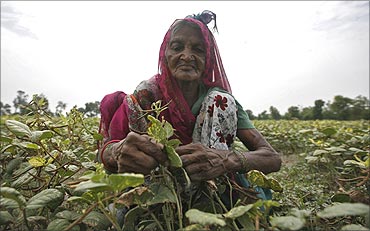
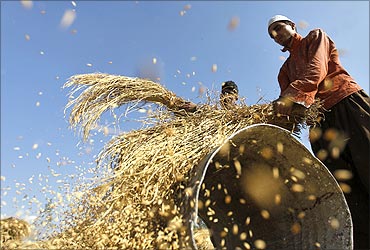

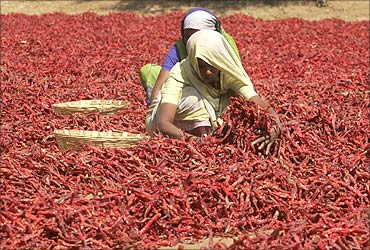
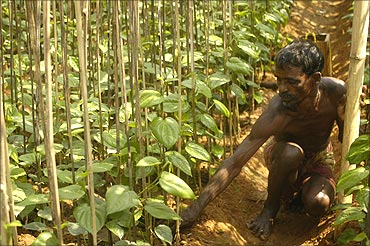
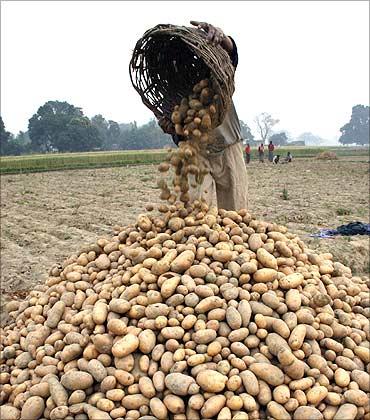
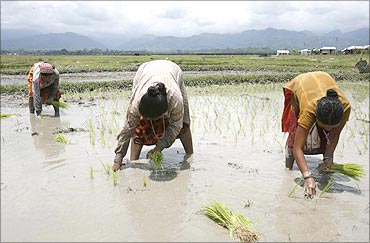
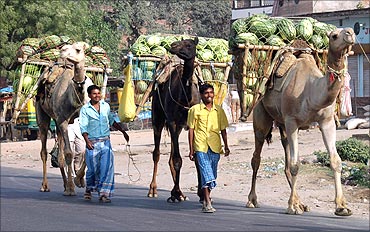

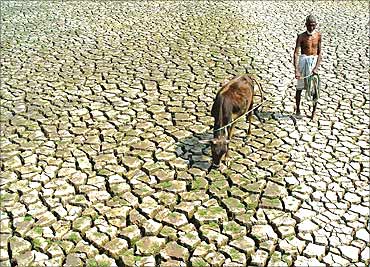
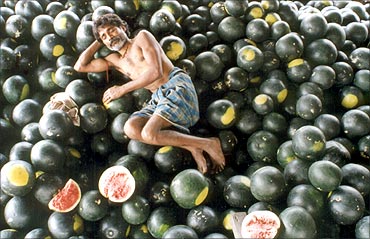

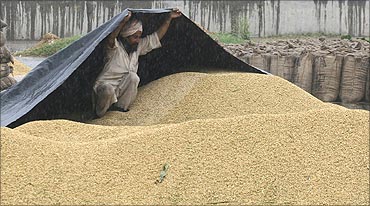
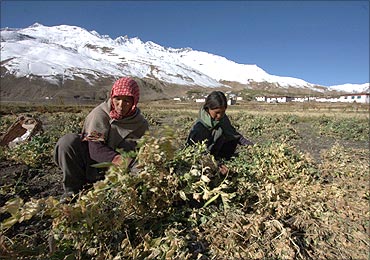
article